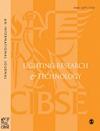观点:关于技能的具体说明
IF 2.2
3区 工程技术
Q2 CONSTRUCTION & BUILDING TECHNOLOGY
引用次数: 1
摘要
它开始于一键打开或关闭它的能力。然后我们可以通过旋转旋钮来调高或调低它。现在,数字LED技术可以产生几乎任何光谱功率分布;3d打印使灯具能够根据特定的光强分布进行生产;控制系统可以根据一天中的时间、季节、占用情况、活动或人们的突发奇想来改变照明。现在,照明供应商生产符合精确定义规范的系统的能力远远超过了从业人员为预期照明特性生成规范的能力。一段时间以来,我一直提倡一种名为“照明设计目标(LiDOs)程序”的照明实践方法。指导照明从业者指定与室内空间照明的数量和分布有关的设计目标,并由此生成直接光通量的空间分布规范,以最佳地实现目标。从业人员选择的目标范围可以从有效利用通量到为选定的特征创建视觉重点模式,并且该程序引导从业人员开发应用程序独有的空间通量分布。这一过程能够被开发,以纳入更广泛的照明设计目标。这将使从业者能够制定一套目标,以描述他或她对照明如何影响空间外观、内容和其中人员的看法,并以此为基础,该程序将制定一个规范,涵盖灯具提供的通量的空间、光谱和时间分布。实现这种转变的能力不仅可以使富有创造力的设计师更有信心地表达他们的意图,而且还可以使有关人们对照明反应的研究结果更容易被纳入实践。这个概念解决了照明实践的一个关键问题。照明设计师的产品不是漂亮的照明,而是形成竞争性招标基础的照明规范。设计师必须假设他或她的解决方案将由提出最低价格的承包商安装,并且这个价格将基于他们对在现场花费的尽可能少的时间的估计。它也可以考虑他们对规范通过替换和变更订单节省成本的机会的评估。设计师首先编写无懈可击的规范,然后执行它的技能是成功的关键,但这并不新鲜。新颖的是,人们逐渐意识到,熟练的规范编写可以使照明从业者充分利用我们新兴技术所提供的不断扩大的机会。本文章由计算机程序翻译,如有差异,请以英文原文为准。
Opinion: On the skill to specify
It started with the ability to switch it on or off at the flick of a switch. Then we were able to turn it up or down by twisting a knob. Now digital LED technology enables almost any spectral power distribution to be generated; 3-D printing enables luminaires to be produced for specific luminous intensity distributions; and control systems can vary the lighting to suit time of day, season, occupancy, activity, or just peoples’ whims. The capability of lighting providers to produce systems that will perform to precisely defined specifications now far exceeds the ability of practitioners to generate specifications for intended lighting characteristics. I have for some while advocated an approach to lighting practice named the Lighting Design Objectives (LiDOs) Procedure. The lighting practitioner is guided to specify design objectives relating to the quantity and distribution of illumination for an indoor space, and from this, the procedure generates a specification for the spatial distribution of direct luminous flux to optimally achieve the objectives. The practitioner’s chosen objectives may range from efficient utilization of flux to creating a pattern of visual emphasis for selected features, and the procedure leads the practitioner to develop a spatial flux distribution that is unique to the application. This procedure is capable of being developed to incorporate a broader range of lighting design objectives. This would enable a practitioner to develop a set of objectives to describe his or her vision of how lighting is to influence the appearance of a space, its contents, and the people within it, and from this, the procedure would develop a specification that covers the spatial, spectral, and temporal distributions of flux to be provided by the luminaires. The ability to make this transition would enable not only creative designers to express their intentions with increased confidence, but also for research findings relating peoples’ responses to lighting to be readily incorporated into practice. This concept addresses a crucial issue of lighting practice. A lighting designer’s product is not beautiful lighting: it is a lighting specification that forms a basis for competitive tendering. The designer must assume that his or her solution will be installed by the contractor who has come up with the lowest price, and that this price will have been based on their estimate of the least possible amount of time being spent on site. It may also take account of their assessment of the opportunities that the specification offers for cost savings through substitutions and variation orders. The designer’s skill in firstly writing a watertight specification, and then in enforcing it, is crucial for success, but that is not new. What is new is an emerging awareness of the role that skilful specification writing can play in enabling lighting practitioners to gain full advantage of the expanding opportunities offered by our burgeoning technology.
求助全文
通过发布文献求助,成功后即可免费获取论文全文。
去求助
来源期刊

Lighting Research & Technology
工程技术-光学
CiteScore
5.40
自引率
16.00%
发文量
69
审稿时长
>12 weeks
期刊介绍:
Lighting Research & Technology (LR&T) publishes original peer-reviewed research on all aspects of light and lighting and is published in association with The Society of Light and Lighting. LR&T covers the human response to light, the science of light generation, light control and measurement plus lighting design for both interior and exterior environments, as well as daylighting, energy efficiency and sustainability
 求助内容:
求助内容: 应助结果提醒方式:
应助结果提醒方式:


